Liverpool warehouse converted into offices by Snook Architects
British studio Snook Architects used industrial materials, reclaimed furniture and colourful storage units to transform a 550-square-metre loft in Liverpool into an office for creative agency Uniform (+ slideshow).
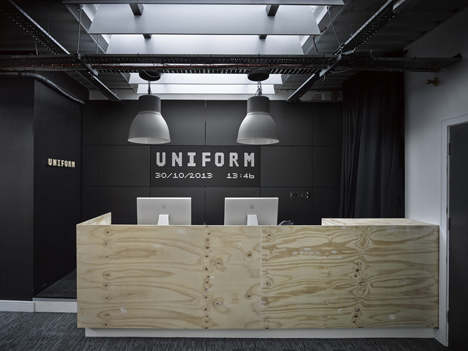
Snook Architects was tasked with creating a space that combined big, flexible workspaces, meeting areas, private booths, model making spaces, prototyping and electronics workshops, a photography studio, and a huge kitchen and refectory where the team can eat together.
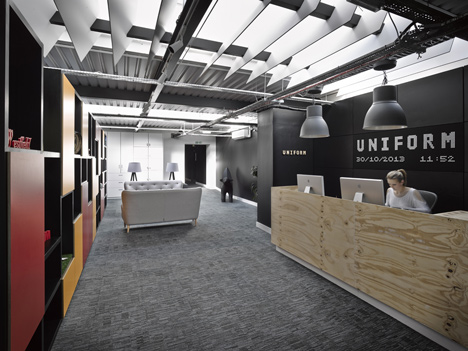
The space was previously used as a storage area for shops that occupy the lower floors of the building.
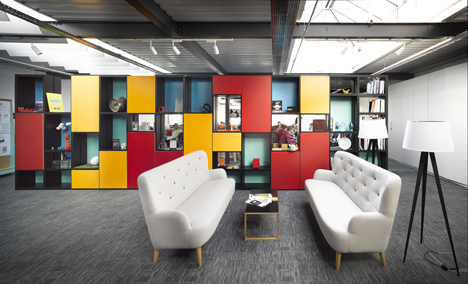
"As relatively basic storage space the floor was more akin to simple warehouse than office," architect Neil Dawson told Dezeen. "A series of roof lanterns lit the deep floor plan but produced blinding light during sunnier days."

In its new state, the space features a series of monochrome spaces that are dotted with splashes of colour to highlight the eclectic array of clients and services the company offers. To counteract the lighting issue, the team inserted louvres that can be closed when the sun is too bright.
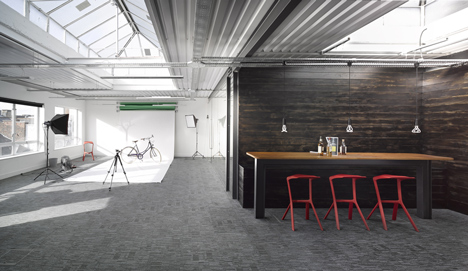
The space uses utilitarian materials such as chipboard and plywood. "This was to show how the with specific context the most mundane of material can be transformed into something special," said Dawson.
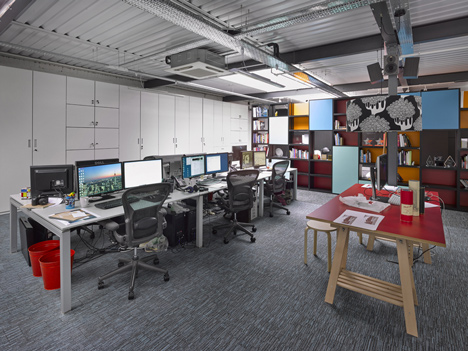
The majority of the furniture was taken from the client's old offices, with the addition of recycled chairs in the canteen.
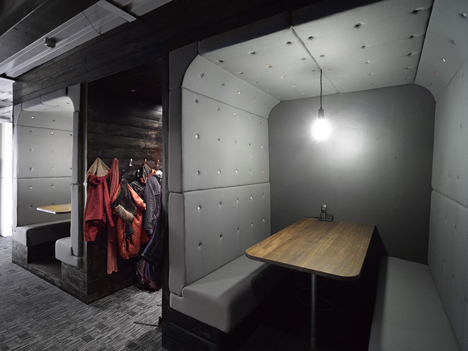
To satisfy the brief, the team created three zones; the main open-plan office, a service zone replete with model space, photography and meeting areas and a social area for the canteen and games room.

A colourful storage wall in the reception area acts as an exhibition area, where new customers can see what clients the team at Uniform are currently working with.
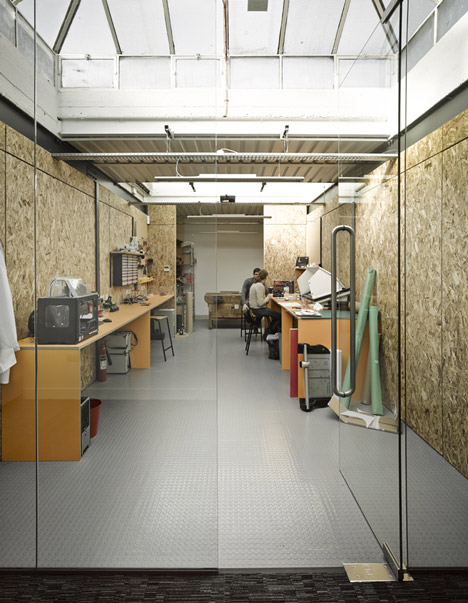
"The wall itself is an active device. Panels can be clipped on and off as displays require giving an emphasis towards the office or the reception," said Dawson. "Panels can be left off entirely to give visitors an enticing view of the work being undertaken in the studio beyond."
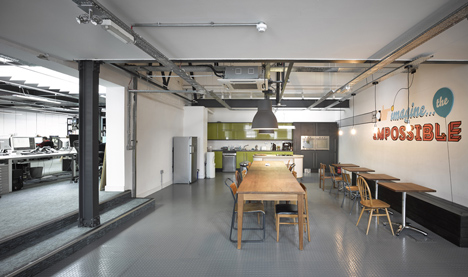
The team also installed was a flip-dot display behind reception. Based on the old messaging boards in train stations, this is connected to the internet to give up-to-date information on weather, date, time and financial reports from the company.
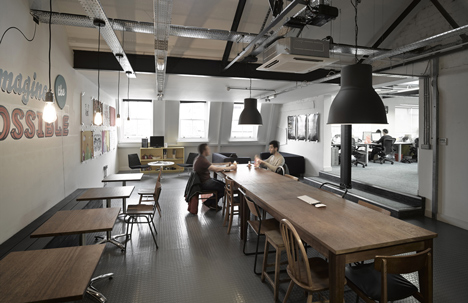
"The idea is to remind potential clients of the value of alternative thought and presentation within the realm of digital media," added the architect.
Photography is by Andy Haslam.